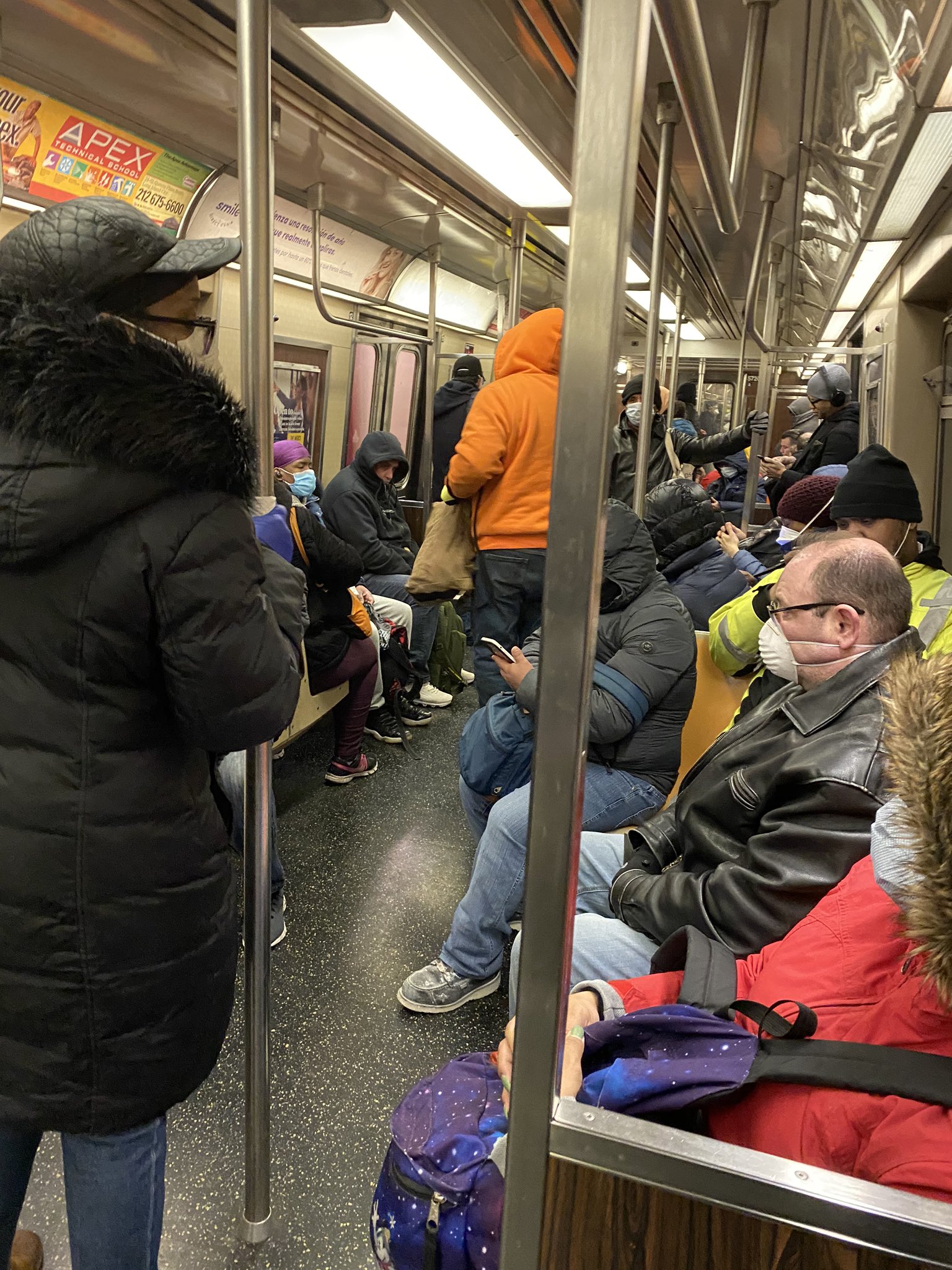The Metropolitan Transportation Authority must reapportion service so that essential workers — most of whom are low-income people of color — don’t contract the deadly coronavirus inside packed subways and buses, a coalition of transit advocacy groups said Tuesday.
As the coronavirus ravages the five boroughs, killing 3,202 New Yorkers as of Tuesday morning, officials are urging residents to stay home and avoid public transit. But those who keep the city running, including cooks, cleaners, doctors, nurses, first responders, and grocery workers — 76 percent of whom are people of color, according to the U.S. Census — can't work at home from a computer.
With city data showing that many essential workers hail from communities that are suffering disproportionately from the virus, including the Bronx, central Queens, and central and east Brooklyn, the more-than-dozen-member coalition urged the MTA to prioritize service in those neighborhoods over ones where ridership is lighter.
“Our organizations are alarmed that crowding on particular MTA bus and train routes poses an imminent public health threat to New Yorkers, especially black and brown communities where the city’s essential workforce is concentrated,” said the groups, which included the Transit Center, Riders Alliance, NYPIRG Straphangers Campaign, and New York Immigration Coalition. “We request that service be redistributed to the greatest extent possible to lessen crowding on transit and prevent COVID-19 from disproportionately harming New Yorkers who must ride buses and trains during the crisis.”
But MTA spokeswoman Abbey Collins responded that the groups are “politicizing a public health crisis,” and said that the MTA is doing all it can to protect passengers, including augmenting service on the packed No. 2 train, which serves residents of the Bronx and central Brooklyn. (The Daily News had coverage of that late yesterday.)
"The MTA Essential Service Plan, which was implemented more than three weeks ago to keep these heroic essential workers moving, is based on data and facts," Collins told Streetsblog.
But advocates urged even more shifting of service, noting that bus operators had reported that "some routes are running with almost no riders, while others, such as those serving hospitals, remain too crowded for passengers to maintain a safe distance."
Photo of a packed subway train in NYC on April 2, 2020 at evening rush hour. Most of the riders are black and brown. This crisis IS and WILL CONTINUE to disproportionately effect marginalized communities. #COVID19 #coronavirus #pandemic #BlackLivesMatter #PeoplesBailout pic.twitter.com/LrTyak075n
— Christina (@StinaAvenida) April 3, 2020
Included among essential workers are the staff of the MTA itself. The public-health emergency has caused a massive decline in ridership — 92 percent — but also means there are fewer workers to run the trains and buses. MTA New York City Transit President Sarah Feinberg announced yesterday that 33 agency employees had died from the virus and thousands more are under quarantine.
While we're waiting for a breakdown by race in NYC, this map tells a stark story. Coronavirus is hitting low-income communities of color extraordinarily hard: pic.twitter.com/ZSCT64MZoq
— Mark D. Levine (@MarkLevineNYC) April 3, 2020
Who rides in a pandemic? Riders like Trecy: "I ride the subway to survive. I ride from Brooklyn to care for children in Manhattan. I don’t have a choice. I'm single. I’m an immigrant. No government program is bailing me out or paying my rent or my bills. ..."
— 🚇 Riders Alliance (@RidersAlliance) April 6, 2020
</thread> pic.twitter.com/b3dGx4NU3q
The coalition said that it understood that the MTA faces "tough constraints," but insisted that "the situation is so urgent, and the consequences of delay or inaction so grave, that service changes must be enacted despite these obstacles ... to enable transit riders making essential trips to maintain safe physical distance on vehicles.”






